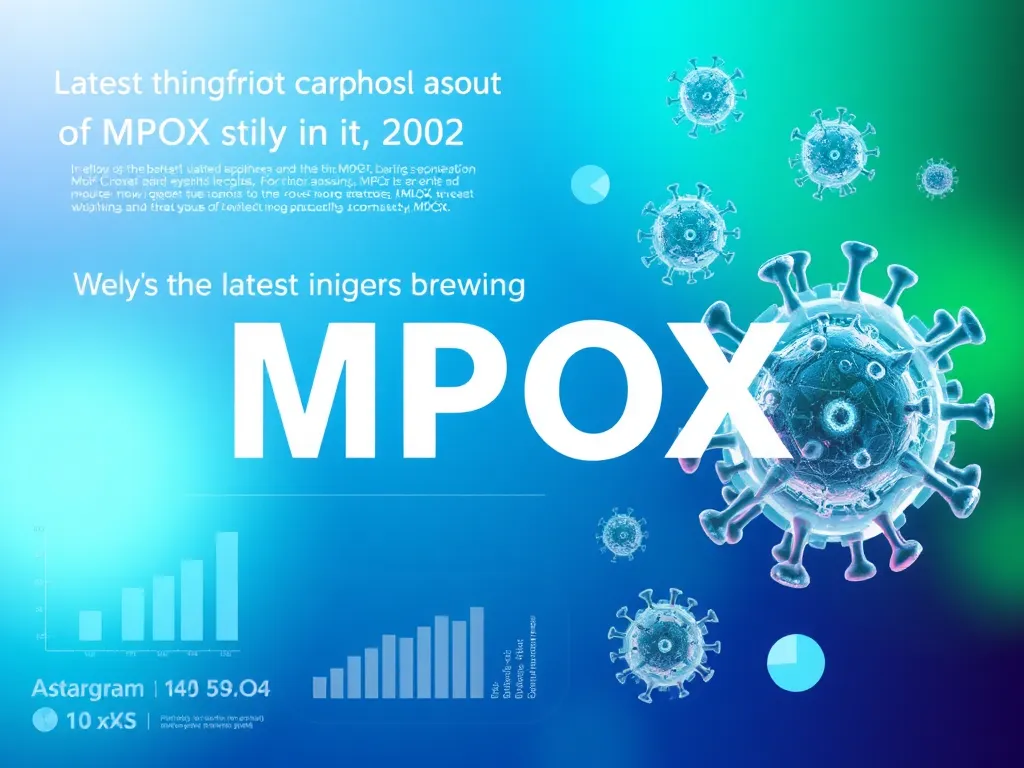Understanding MPOX: Latest Insights and Facts

Understanding MPOX: A Comprehensive Guide
MPOX, also known as Monkeypox, is a viral zoonotic disease caused by the monkeypox virus, which belongs to the Orthopoxvirus genus. The disease was first identified in monkeys in 1958 and has since been documented in various animal species and humans. MPOX is primarily found in Central and West African regions, where it is endemic, but its spread has raised concerns globally due to recent outbreaks.
Transmission of MPOX occurs through direct contact with infected animals, humans, or contaminated materials. The virus can enter the body through broken skin, respiratory droplets, or mucous membranes. Close skin-to-skin contact, especially among individuals with rashes or lesions, increases the risk of human-to-human transmission. Awareness of these transmission routes is essential in controlling the spread of MPOX.
The global statistics on MPOX cases have shown a significant increase in reported infections. While historically regarded as rare, the 2022 outbreak raised alarm with thousands of confirmed cases worldwide. Public health officials are monitoring the situation closely to prevent further spread and alleviate concerns over potential pandemic outbreaks.
MPOX symptoms typically begin with fever, headache, and fatigue, followed by the development of a rash that may resemble chickenpox or smallpox. Lesions may appear and evolve over time, causing discomfort and potential secondary infections. Early recognition of these symptoms is crucial for timely management and prevention of further transmission.
There are ongoing efforts to improve the management and treatment of MPOX cases. Current strategies include antiviral treatments, vaccinations, and supportive care for symptomatic relief. As research into MPOX continues, new developments may enhance treatment options and overall outcomes for patients affected by this virus.
Overview of MPOX
MPOX is defined as an infectious disease caused by the monkeypox virus, with symptoms that can range from mild to severe. The disease has attracted attention due to its similar appearance to smallpox, leading to concerns over potential misdiagnosis and public health implications. The background of MPOX includes its identification in laboratory settings and the subsequent recognition of human cases, especially in areas where the virus circulates in animal populations.
Transmission routes for MPOX primarily involve direct contact with infected animals, such as rodents and primates, as well as human-to-human contact. Additionally, the virus can spread through contaminated surfaces and objects, highlighting the importance of proper hygiene practices and environmental sanitation in preventing outbreaks.
MPOX, previously known as monkeypox, is a viral disease that has garnered significant attention in recent years due to its resurgence and potential impact on public health. This zoonotic infection is primarily transmitted from animals to humans, but it can also spread between individuals through close contact. Symptoms typically include fever, rash, and swollen lymph nodes, which can escalate to more severe complications in some cases. Understanding the transmission, symptoms, and preventive measures is crucial in managing outbreaks effectively. For more detailed information on MPOX, including its epidemiology and clinical features, visit the CDC's official MPOX page.
Global statistics regarding MPOX cases illustrate a fluctuating pattern of infection. The disease has a relatively low incidence rate compared to other viral infections; however, sporadic outbreaks have occurred, leading to public health investigations in various countries. Since the onset of the recent outbreak, the World Health Organization (WHO) and local health authorities have documented thousands of confirmed cases, necessitating increased vigilance and response measures.
Symptoms of MPOX
Common symptoms associated with MPOX include fever, chills, rash, and swollen lymph nodes. The rash typically progresses through stages, starting as macules and evolving into vesicles and pustules. These symptoms may vary in severity and can sometimes lead to complications, particularly in individuals with weakened immune systems or underlying health conditions.
Recognizing MPOX early involves being aware of the characteristic symptoms and monitoring for any exposure to infected individuals or animals. Individuals presenting with fever and a rash, especially after recent travel to endemic areas or contact with infected persons, should seek medical evaluation promptly to facilitate timely diagnosis and appropriate management.
Distinguishing MPOX from other illnesses requires careful consideration of symptoms and recent exposure history. Conditions such as chickenpox, smallpox, and other viral exanthems can present similarly, making differential diagnosis important. Laboratory testing is necessary for definitive confirmation of MPOX infection.
Treatment and Management of MPOX
Current treatment options for MPOX primarily focus on supportive care and the management of symptoms. While there is no specific antiviral treatment approved exclusively for MPOX, measures are taken to alleviate fever, manage pain, and prevent secondary infections. Patients are advised to rest and stay hydrated during their illness.
Antiviral medications, such as tecovirimat (TPOXX), show promise in treating MPOX. They target the virus's ability to replicate and have been utilized for symptomatic relief, particularly in severe cases. Research is ongoing to further evaluate their efficacy and establish specific treatment protocols for MPOX infections.
Supportive care for MPOX patients involves addressing symptoms, maintaining hydration, and ensuring overall comfort during the recovery process. Education on safe practices can further protect others from transmission during this time. Health care providers play a crucial role in managing MPOX cases and advising on isolation protocols when necessary.
Preventive Measures for MPOX
Vaccination strategies against MPOX are being explored to curb the spread of the virus. The smallpox vaccine has been shown to provide some protection against MPOX due to the virus's close relation to monkeypox. Vaccination efforts are critical, especially for high-risk populations or in outbreak situations, to enhance community immunity.
Personal hygiene practices are paramount in preventing MPOX transmission. Regular handwashing, avoiding close contact with infected individuals or animals, and proper sanitation of surfaces can significantly mitigate the risk of infection. Public awareness campaigns can further promote hygiene habits and protective measures.
Public health policies for MPOX control include contact tracing, quarantining infected individuals, and educating communities about the virus's risks and transmission methods. Health organizations are actively promoting awareness and preparedness strategies to respond to MPOX outbreaks effectively, ensuring rapid identification and isolation of cases to limit spread.
MPOX and Public Health
The impact of MPOX on community health can be significant, particularly during outbreaks. Concern over the potential for widespread transmission instigates public health interventions at local and national levels. Understanding MPOX as a public health threat underscores the need for continued surveillance, research, and preparedness strategies.
MPOX outbreak response plans involve coordinated efforts to manage cases, trace contacts, and implement preventive measures effectively. Health authorities develop response strategies tailored to the specific epidemiology of MPOX in the impacted region, ensuring resources are allocated efficiently and effectively to contain the virus.
Collaboration between health organizations on MPOX is essential for successful management of the disease. Increased communication and information sharing help to build a comprehensive understanding of MPOX, allowing for synchronized efforts across borders to tackle outbreaks. Partnerships between local and global health authorities enhance the public health response to MPOX and facilitate research advancements.
